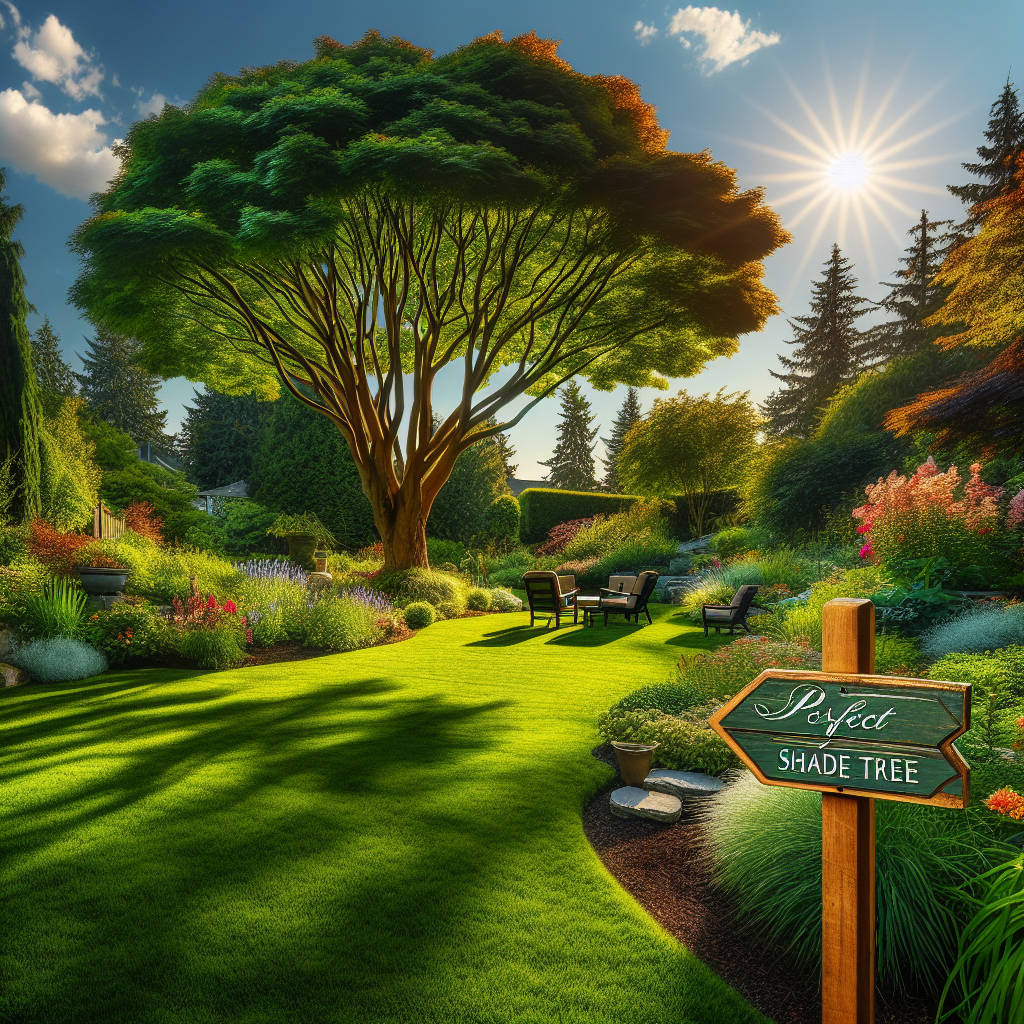How to Choose the Perfect Shade Tree for Your Yard
Finding the ideal shade tree for your yard encompasses more than just aesthetic appeal. It’s an investment in your property, a commitment to the environment, and a step towards a more enjoyable outdoor space. In this post, we’ll walk you through the key factors you need to consider before making your decision.
Understand Your Yard’s Conditions
Before diving into the tree selection process, it’s essential to assess your yard’s specific conditions. You should evaluate:
- Soil Type: Different trees thrive in various soil types. Perform a soil test to determine your soil’s pH and nutrient levels.
- Space: Consider the mature size of the tree — both height and root spread. Proximity to buildings, power lines, and other structures is crucial to prevent future damage.
- Climate: Your local climate, including USDA Hardiness Zone, will significantly influence the types of trees that can thrive in your yard.
By understanding your yard’s environment, you can narrow down your tree options to those that will grow best in your space.
Prioritize the Tree’s Purpose
Ask yourself what you want the tree to provide. Is it purely for shade, or do you also want it to bear fruit, flower, or change colors in the fall? Perhaps it’s a combination of these. Here are some popular choices for each purpose:
- Shade: Maples and Oaks are excellent for large, expansive shade.
- Flowers: Dogwoods and Redbuds can add a splash of color.
- Fruit: Apple or Pear trees offer the bonus of a homegrown treat.
- Fall Color: Consider a Sweetgum or Bald Cypress for stunning autumn displays.
Trees like the Autumn Blaze Maple are fast growers and provide a brilliant fall color as well as good shade.
Consider Growth Rate and Longevity
Fast-growing trees like the Willow or Poplar can provide shade quickly but may not live as long or be as robust as slower-growing species like the Oak. Fast growers are also often more vulnerable to diseases and pests. Think about whether you prefer fast results or a tree with a potentially centuries-long lifespan that will grow with your family.
Maintenance and Care
All trees will require some level of maintenance, but some demand more than others. Ask yourself how much time you are willing to dedicate to tree care. Some species shed leaves or fruit excessively, while others might need regular trimming to maintain their shape and health. Deciduous trees, which lose their leaves in the fall, can create more work than evergreens but offer a seasonal dynamic that evergreens do not.
Aesthetic Preferences
Your personal style should also play a part in your decision. Do you prefer a tree with a weeping form, like a Weeping Willow, or something more structured, like a Columnar Oak? Would you enjoy a tree that attracts wildlife with its fruit, or do you prefer one that offers year-round greenery? Select a tree that speaks to your personal design sensibilities and complements your existing landscape.
Environmental Impact
Choosing a native tree can benefit the local ecosystem by providing habitat for wildlife and requiring less water and care than non-native species. Additionally, larger trees can help reduce carbon in the atmosphere. The Arbor Day Foundation is a great resource for identifying trees native to your area.
Potential Issues
Be mindful of potential problems, such as invasive root systems that can damage foundations or walkways. Some trees also have a high susceptibility to certain diseases or pests. Doing your research or consulting with a local arborist can save you from future headaches.
Local Regulations and Utilities
Before planting, it’s also important to check local regulations, which may dictate how close a tree can be to property lines or buildings. Additionally, you need to consider the location of underground utilities; calling 811 for a utility locate service before you dig is essential.
Where to Buy Your Tree
When it comes to purchasing your tree, you have a few options. Local nurseries often provide healthy, region-appropriate trees and the expertise of knowledgeable staff. Online resources, like Nature Hills Nursery, offer a wide selection of trees suitable for various climates and conditions.
Conclusion
Selecting the perfect shade tree for your yard is a balance between practical considerations and personal preferences. By taking the time to thoroughly understand your yard’s conditions, the tree’s purpose, and the growth and maintenance requirements, you’ll be much closer to choosing a tree that will enhance your landscape for years to come.
Remember, planting a tree is a long-term investment, so choose wisely and with consideration for the future. A well-chosen shade tree can reduce your energy costs, increase your property value, and create a more inviting outdoor space. With careful planning and a bit of research, you’ll be enjoying the fruits of your labor under the cool canopy of your perfect shade tree in no time. Happy planting!


